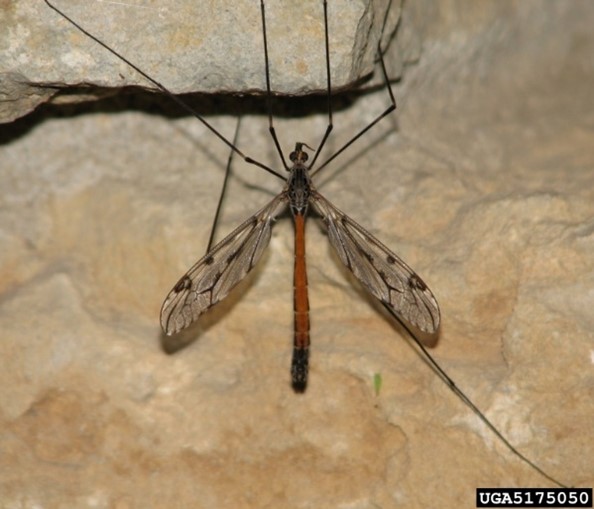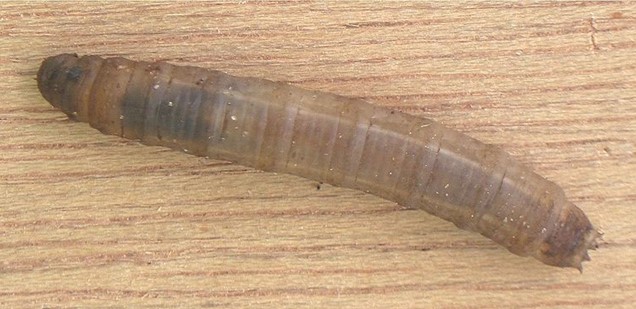Issue 2, May 12, 2022
Crane Fly Larvae in Turfgrass


Left: Crane fly adult, Kevin D. Arvin, Bugwood.org
Right: Crane fly larva (Tipula leatherjacket), Rashbak, Wikimedia Commons
Crane fly (Family Tipulidae) adults are a common sight during Illinois summers. They look like oversized mosquitoes with slender bodies and very long legs. While some people call them mosquito eaters, they actually do not feed as adults. The adults appear during the summer and spend their time mating and laying eggs. The eggs hatch in the fall and the crane flies overwinter as larvae.
Crane fly larvae, sometimes called leather jackets, are seen and recognized less frequently than the adults. The larvae will reach their full size in the spring and early summer. They live in the soil and feed on turfgrass shoots, roots and crowns.
Crane fly larval feeding in turfgrass is usually a nuisance with no significant injury and control is not warranted. However, with large populations and wet conditions, larval feeding can cause thinning and larger bare patches in the lawn, which may warrant treatment. If significant injury occurs, it is usually seen in late spring when the larvae are near their full size. On golf courses, crane fly larvae injury can be mistaken for black cutworm injury. Applying a soap flush to the turfgrass can help bring the larvae to the surface of the turfgrass for identification. This can be done by mixing 1 tbsp of dish soap (not Palmolive) with 2 gal of water and pouring it over the turf with a watering can. If you are not sure what kind of larvae you have, they can be submitted to the UIUC Plant Clinic for identification.
Control
The crane fly species found in turfgrass typically do very well in damp areas, so the primary cultural control recommendations include reducing moisture. This includes avoiding watering in damp conditions and improving drainage in areas that are often wet. Reducing moisture can make the area less attractive to crane flies and kill larvae. Focusing on regular mowing and fertilizing can also help the turfgrass recover from the injury and reduce the presence of thin or bare areas where adults prefer to lay eggs.
Adding biological control agents such as the nematode Steinernema feltiae can help reduce populations of crane fly larvae.
There are multiple chemical options for the control of crane fly larvae. These include carbaryl (Sevin), chlorantraniliprole (Acelepryn), clothianidin (Arena), imidacloprid (Merit). Some are intended to be applied in the fall when crane fly larvae are young and most susceptible to treatment, while others are intended to be applied in the spring when larvae are mature. Be sure to check the specific use section of the individual product label to make sure the product can be applied at the time that suits your situation.
Author:
Sarah Hughson